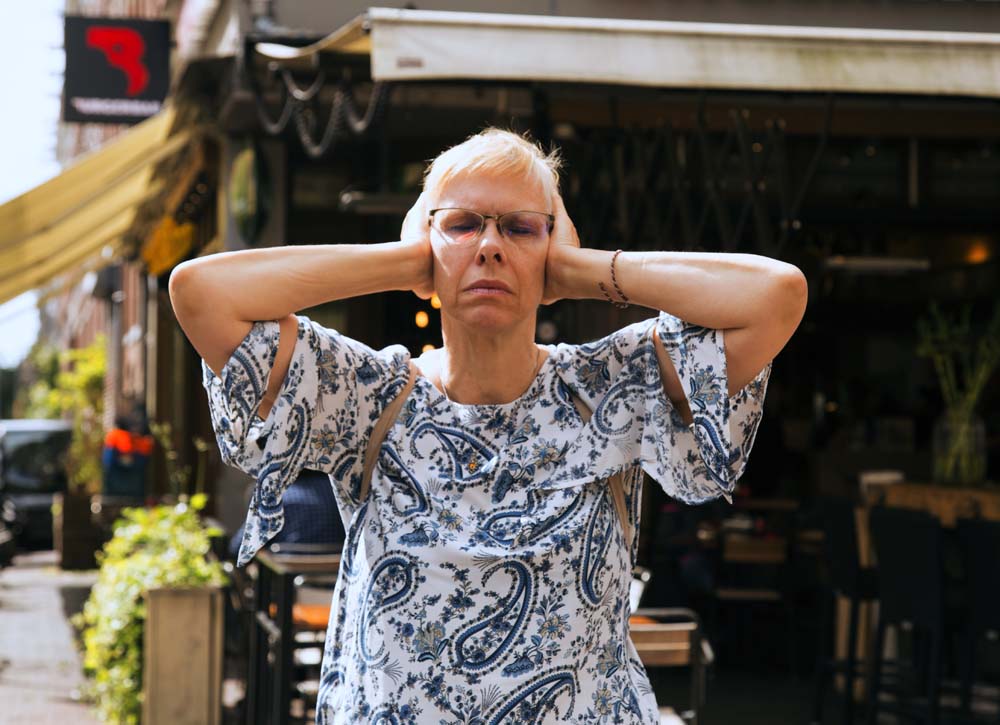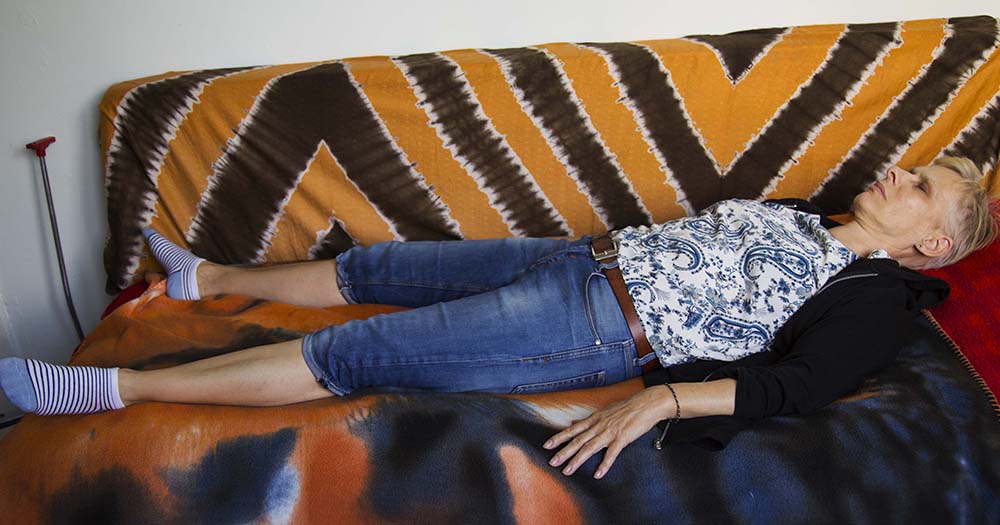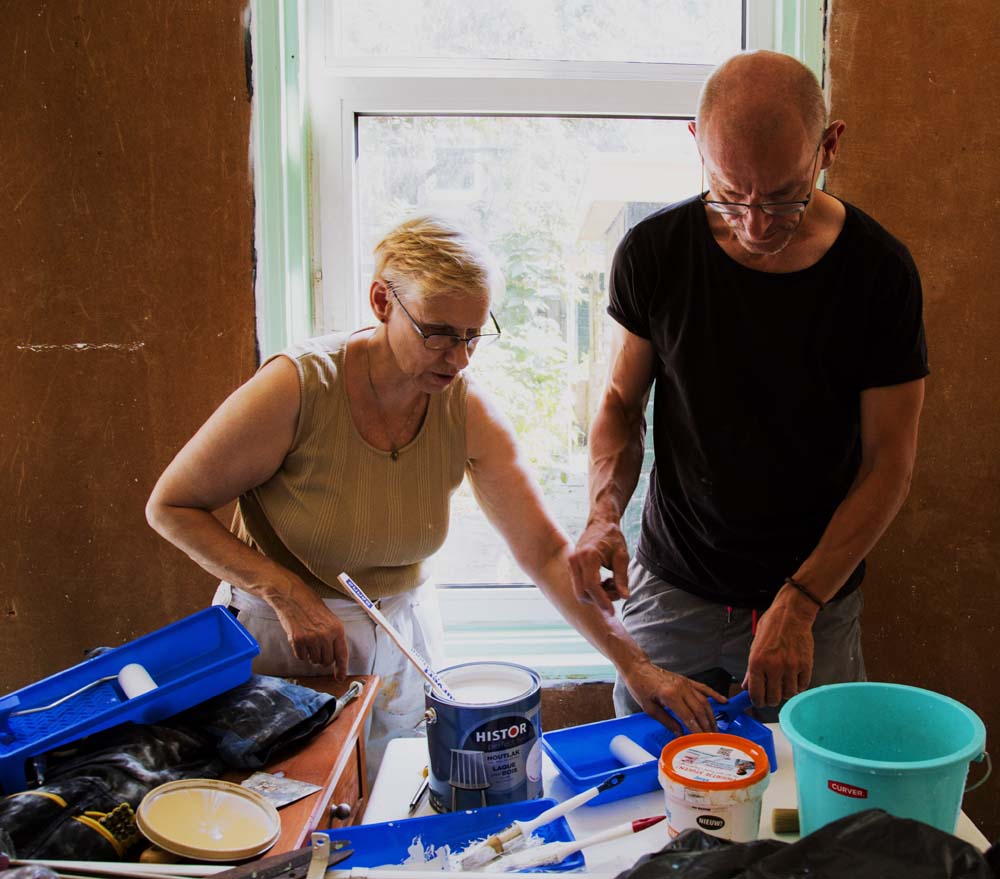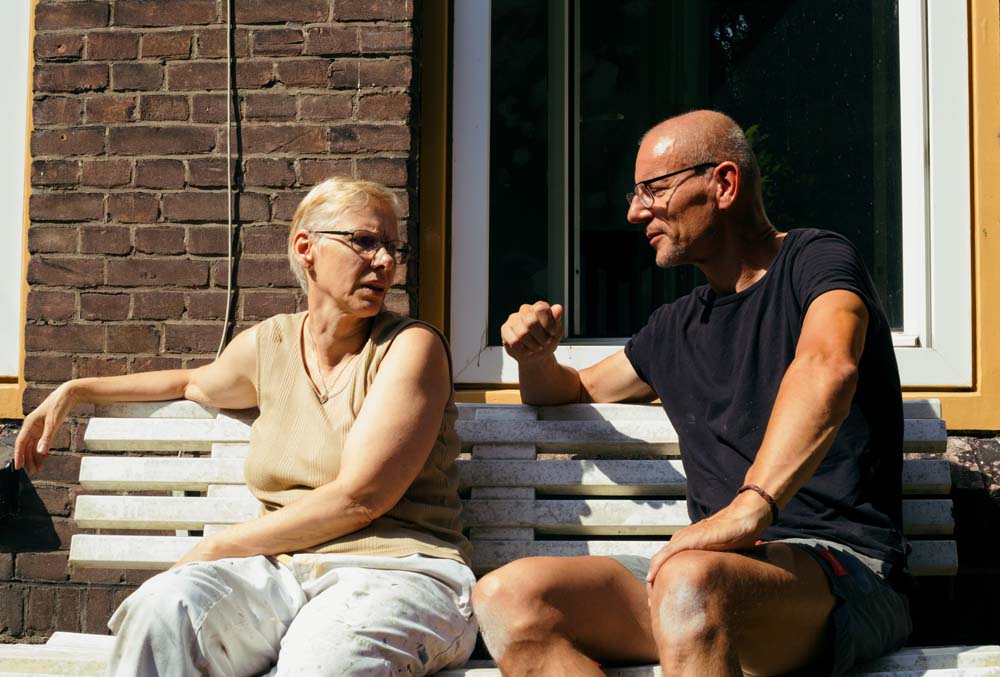DISCOVERING THE CEREBRAL VENOUS SINUS THROMBOSIS (CVT) THROUGH JACQUELINES EYES
Jacqueline is one of my gardeners from De Regenboog Groep who clean my garden. That is how I met her. One day I was telling her about my photo work on rare and chronic diseases and she exclaimed: “ I also have a rare condition! If you want you can use my story for your photo documentary.” So we started our collaboration . She is a sweet person with a big heart and a lot courage who lives with Cerebral Venous Sinus Thrombosis.

Jacqueline was diagnosed at age of 49 years old together with her daughter who was 20 years old. Cerebral venous sinus thrombosis is rare, with an estimated 3-4 cases per million annual incidence in adults. While it may occur in all age groups, it is most common in the third decade. 75% are female.Cerebral venous sinus thrombosis (CVST) is the presence of a blood clot in the dural venous sinuses, which drains blood from the brain.
Symptoms may include headache but may also develop suddenly (thunderclap headache), abnormal vision, any of the symptoms of stroke such as weakness of the face and limbs on one side of the body, and seizures. Many patients have symptoms of stroke: inability to move one or more limbs, weakness on one side of the face or difficulty speaking. 40% of people have seizures, although it is more common in women who develop sinus thrombosis peripartum (in the period before and after giving birth).
These are mostly seizures affecting only one part of the body and unilateral (occurring on one side), but occasionally the seizures are generalised and rarely they lead to status epilepticus. In the elderly, many of the aforementioned symptoms may not occur.
Common symptoms in the elderly with this condition are otherwise unexplained changes in mental status and a depressed level of consciousness.The pressure around the brain may rise, causing papilledema (swelling of the optic disc) which may be experienced as visual obscuration. In severely raised intra-cranial pressure, the level of consciousness is decreased, the blood pressure rises, the heart rate falls and the patient assumes an abnormal posture.
A subsequent systematic review of nineteen studies in 2006 showed that mortality is about 5.6% during hospitalisation and 9.4% in total, while of the survivors 88% make a total or near-total recovery. In children with CVST the risk of death is high.
Poor outcome is more likely if a child with CVST develops seizures or has evidence of venous infarction on imaging. Given that older studies show no difference in incidence between men and women, it has been suggested that the use of oral contraceptives in women is behind the disparity between the sexes.

Jacqueline is around 50 years old and she lives together with her son. After she couldn’t do her administration job any more which she loved. They put her in social welfare, she wanted to work very much but it was not possible to find a paid job with her condition. So she looked for a daily activity. Fortunately she found it through the Regenboog groep where she is a garden and handy woman. She is happy to be able to work but she can not a multi-task because she gets very easily tired because of the fatigue in her condition. She needs a lot more rest than an average person. That is why she can only work up 3 days and up 5 hours. If she is in a busy place she can have a very bad Tinitus so she needs to avoid crowds. Her fatigue frustrates her a lot because she can not do as much as she wants. When her fatigue give her some respite, she enjoys the qualities of life in her hobbies: gardening, sport and visiting museums.

Jacqueline’s message to the audience through her portrait is that people who do not have this condition need to develop more understanding, patience and empathy for people who live with it. If you don’t see anything wrong with them only outside, believe them when they say that they are dead tired and they need to lay down. She hopes that with her story she can teach people more about people like her and her daughter who have Cerebral Venous Sinus Thrombosis. If people have more understanding of the consequences, they become stronger and self-secured to the outside world.

I write a poem for every project to explain the concept of the story. Here below is the poem about Jacqueline entitled: The woman with a hard life who smiles.
THE WOMAN WITH A HARD LIFE WHO SMILES
Jacqueline is a woman with a hard life
who smiles, no matter the difficulties she has
on her path, because she has Cerebral Venous Sinus Thrombosis.
CVT makes her so dead tired
that she can sleep for hours or days
and she is still exhausted.
Sometimes for her it is difficult just to keep up a conversation.
She avoids crowded places,
otherwise she can get over stimulated
a sound can trigger her Tinnitus.
She has a lovely relation with her children
and some good friends despite this,
she feels often misunderstood from people
who judge easily her chronic condition.
Despite all the bad sides of living with CVT,
This wise woman with a big heart likes
working as a gardener and handy woman
enjoying the pleasant ambience with her colleagues.
She loves also going to museums, parks and watching movies,
and enjoying the amazing things in life that she can.




